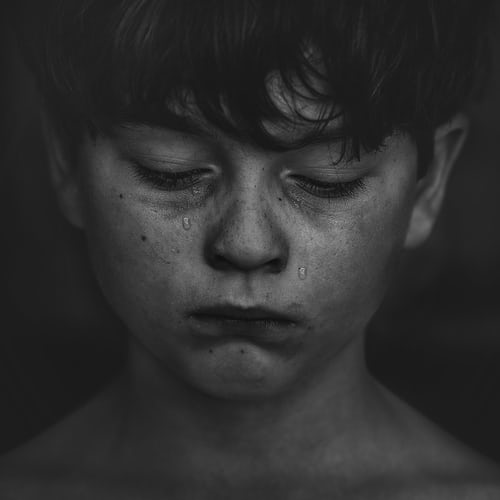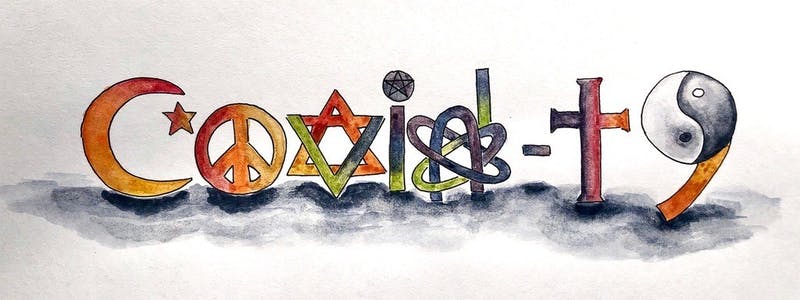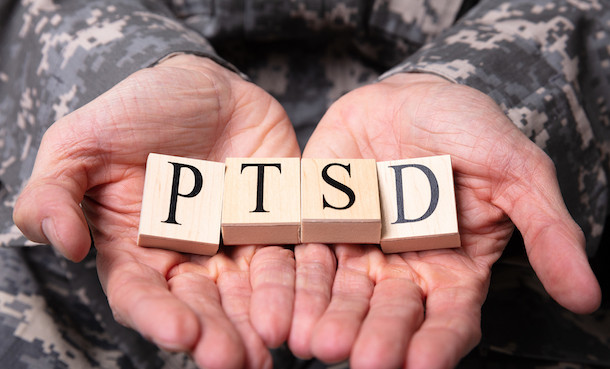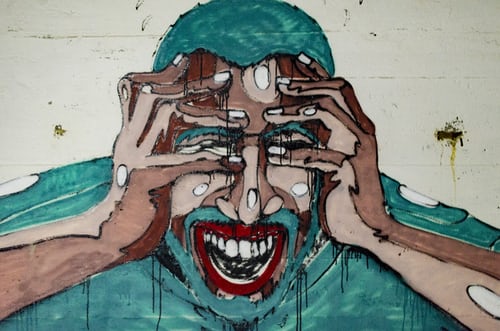Pradeep Kumar Panda
Mental health is not just about absence of mental illness. It is critical that the government takes long-term economic and mental health policy measures to ensure employment, basic amenities and public health, without which mental healthcare cannot address the debilitating effects of ongoing structural violence on a majority of citizens.
The general view of professionals within mainstream psychiatry and medicine as well as social media-dependent masses is that a pandemic, such as COVID-19, creates trauma-triggering mental disorders, of which post-traumatic stress disorder (PTSD) is the predominant one. This conception is based on the premise that it is primarily the traumatic event (for example, the outbreak of a life-threatening pandemic) rather than the adverse sociopolitical conditions preceding and succeeding (poverty and migration of labourers) that inflicts the mental health of the person.

Is one of the worst affected sections during the pandemic—migrant labourers, whose life, health or mental health has always been at risk even before this pandemic—really concerned about diagnosis and treatment for PTSD or other disorders? No, they are not. In most of the developing societies of the world, the less privileged have feelings of being further dehumanised when exposed to political violence or other massive traumatic events like COVID-19, irrespective of developing PTSD following the traumatic events. For them, the causes for concern and distress are the questions of survival by finding employment or resuming one’s work, safeguarding social identity and individual voice that are under threat, and ensuring education for their children.
Even the psychosocial intervention towards mental health does not appear meaningful to them if the structurally induced injustice is not acknowledged by the interventionist. Given that, in today’s world marked by neo-liberal push towards decreasing allocation of funds for health and education by the government, insecure employment and commodification of labour or human capital—all of which propagate denial of equity and equality, thereby creating injustice for the less-privileged—how can one imagine mental healthcare without social justice? More specifically, we would analyse how the unjust neo-liberal context may threaten mental health and related care for citizens during this pandemic.
In the pre-COVID-19 society of the past few decades, people—in most of the countries of the world, whether developed or developing—in everyday life might not have had a clear awareness about living in a neo-liberal world order. The arrival of the the current pandemic has made its presence felt by threatening any sense of “secure” livelihood and future aspirations that suddenly look vulnerable through layoffs, pay cuts and unemployment, particularly among 161 million casual or contract workers of formal or informal sector during the lockdown as well as the gradual reopening of the economy.

These labourers directly or indirectly cater to the profit of the capitalists without any provision of employment (or even a minimum daily wage) guarantee and health insurance. No doubt, such threats to employment, health and livelihood are there for other employees (with more than three year job contract) too, but the miseries of the contract or casual labourers are way too high to be compared, as these authors have elaborated. Thus, the miseries of the pandemic are the making of neo-liberalism where “the state has been utterly compromised. Social life has been atomised and private capital has driven the service sector so that it is most efficient in production of profit rather than in the delivery of social services.”
People, particularly the less-privileged, have to fend for themselves. Migrant labourers engaging in mostly casual labour who have become jobless in the informal sector and are now forced to reverse-migrate are the worst affected. Also, smaller retail-based businesses that were affected by the online corporate giants, such as Amazon, Flipkart, Walmart, and Alibaba, are now in much graver danger of being completely abrogated.
Although the government is promising to provide its services to the people with short-term relief measures, the basic structure of the economy in the pre- and post-Covid-19 times continues to remain in favour of the profit-driven capitalist few. Along with their diminished hopes for fulfilling personal aspirations or dreams due to facing or perceiving imminent unemployment, pay cuts or layoffs, people may also get affected.
We have already witnessed politicization of virus spread on religious grounds. There is stigma against not only COVID-19 patients, but also the potential carriers of virus, such as migrant labourers who are returning home or even the doctors and medical staff. Domestic violence cases are also on the rise. Another structurally created problem is inadequate residential space for home quarantine (as per the guidelines of the World Health Organization [WHO]) and the unavailability of in-house water facility for drinking and other household chores (so that one avoids community visits for the same) for adequate social distancing, and this has become a hazard distressing a majority of people. Within this context of structurally shaped inequality and injustice, let us look at the issue of mental healthcare for people affected in the pandemic.

The WHO definition of mental health focuses not only on the absence of mental illness; it rather defines mental health as “a state of well-being in which every individual realizes his or her own potential, can cope with the normal stresses of life, can work productively and fruitfully, and is able to make a contribution to her or his community”. In India, the Mental Healthcare Act, 2017 has been an improvement over earlier acts in terms of provisions for safeguarding human dignity of the patients. More importantly, it also puts the responsibility on the state for “promotion of mental health, training mental health professionals, and provision of care”
Given the neo-liberal or capitalist economic system that continues to guide mental healthcare primarily through biomedical perspective, it is not difficult to fathom that the crucial “social determinants of mental health (for example, poverty, gender, literacy, employment, social exclusion, etc)” may continue to be ignored. However, the gravity of this pandemic situation demands quick and careful attention to this perpetual ignorance of social exclusion and injustice causing threat to survivors’ well-being.
In the scenario of disasters or pandemics, such as COVID-19, even if the worst affected persons, including migrant labourers, unemployed, overworked doctors, victims of domestic violence, are diagnosed with a mental disorder, hospital-based care might not be practically possible because of the sheer number of patients. Online counselling, yoga and suicide prevention have been the major way to effectively address mental health concerns. Initiatives by National Institute of Mental Health and Neurosciences (NIMHANS), associations of mental health professionals (including psychiatrists and psychologists) and non-governmental organisations (NGOs) have been some sigh of relief for people. However, such people largely constitute about 400 million middle class who are able to take care of their survival and health, besides social distancing. The rest of the country faces the greater brunt of neo-liberal economy in the post-COVID-19 society.

Already exploited in the pre-COVID-19 period, the workers in the informal sector face further assault on their dignity. Out of 418 million workers in the informal sector, even before the COVID-19 outbreak, about 67% (278 million) of them were not getting Rs. 375 daily wage [or earnings in the case of self-employed individuals] recommended as the national minimum wage necessary to meet their household basic needs at 2017–18 prices. In the post-COVID-19 lockdown period, despite central government’s advisory to the employers or establishment for not terminating or doing pay cuts to any worker (including contract or temporary), it will be extremely difficult to get legal justice against any termination or pay cuts for about 161 million workers because a “worker,” in legal terms, needs to have at least a three-year contract with the employer.
The relief package announced by the government for the informal sector is a welcome step, but Mahatma Gandhi National Rural Employment Guarantee Act (MGNREGA) workers (work discontinued due to the pandemic) and millions of migrant workers without ration cards were excluded from this relief. Although some state governments have launched e-coupon facility for those who do not possess a ration card, the beneficiaries are not aware about it. The sudden creation of such facilities for people who are struggling to understand the online working of it does not contribute to meaningful relief. These authors also elaborate on the need to replace Aadhaar-based biometric authentication (ABBA) used for ration distribution with offline procedures as the Aadhaar and ABBA systems are exclusionary.

Due to uncertainty associated with the extension of lockdown and inadequate relief (lack of ration cards) and worries about the family, migrant workers are reverse-migrating to their villages. Roughly more than 120 to 140 million are, at the moment, either walking back or are stranded in various camps” due to the effects of the lockdown. Sixteen of these physically and mentally fatigued reverse-migrating labourers were run over by a goods train in Aurangabad, Maharashtra, on 8 May 2020 in the morning hours. They were oblivious of any information about the timings of the trains during lockdown, and to avoid police who were monitoring road route to their destination, slept on those railway tracks the previous night.
At least 89 such deaths have occurred due to reverse migration since lockdown. Those who were able to return to their villages face exclusion due to the stigma of “virus spreaders,” with some of them made to live on the trees. If this is not living in a forced dehumanised condition (due to structural violence) that shatters any sense of well-being, what else is? Where is human dignity for such a section that constitutes about one-third of our country’s population? What about their well-being that is intricately tied to their family members’ well-being and children’s education? Do we wait for the diagnosis of psychiatric disorder to take care of their well-being?
More than two decades ago, how disaster survivors could face re-victimisation if mental healthcare could begin only after they were diagnosed with a psychiatric disorder like PTSD. Some victims would not be believed if they could not secure the diagnosis. The grand narrative of PTSD and its treatment, however, continues to dominate mental health care during this pandemic the world over. On the basis of his research on SARS (severe acute respiratory syndrome) 2003 outbreak in China and a survey in the United States and Canada after the COVID-19 outbreak, has estimated roughly 10% of the population affected by it may develop depression, anxiety disorder or PTSD. Also, more than 40% of patients of the infection may develop with PTSD.

While it is agreed upon by psychiatrists and social scientists that PTSD could be a mental health outcome of massive traumatic events, such as, this pandemic, and appropriate chemotherapy, psychotherapy and community rehabilitation are needed to address that, it is also strongly advocated that such mental disorders may not be the only mental health problems or threats to well-being. As noted above, in the case of the massive exodus of migrant labourers undergoing reverse migration with no certainty about income, health or future, their dehumanisation speaks of the structurally induced threats to well-being, irrespective of a diagnosis of a psychiatric disorder.
With no appropriate economic and healthcare policy, and professionals or institutions to take care of their debilitating mental health may face a real danger of being camouflaged or silenced in the grand narrative of PTSD or psychiatric disorders. It forecloses care for the deprived. One also cannot ignore the danger that if the digital technology (currently being used to get information about the location of infected or uninfected cases) is also used for surveillance purposes establishing a mentally “ill-healthy” categorisation among people that also risks stigma or discrimination based on their social identity.
The fear of COVID-19 infection and facing oppression, social exclusion or hazardous living conditions at the same time may be re-traumatising for people. To the population of migrant labourers mentioned above, if we also add the list of vulnerable groups in post-COVID-19 scenario, which are victims of domestic violence that is reportedly on a rise, religious groups, doctors, and medical staff facing stigma of being “virus spreaders,” and slum dwellers, chawl dwellers with hazardous living conditions, the impact of the structural violence owing to neoliberal policies on their mental health appears daunting. Structurally shaped exclusion or re-traumatisation in this pandemic is intricately linked with neo-liberalism that through its false hopes for a dream future (without a care for employment and health by the government) has led to frustration among people. Their displaced frustration (further fuelled by patriarchy and local politics) has often resulted in hatred for and the exclusion of some vulnerable groups, whose mental health also needs our attention.

Gender-based exclusion and denial of voice has intensified as post-COVID-19 cases of domestic violence have increased. Although helplines are available, the calling device (landline or mobile phone) and the safe space (away from the gaze of oppressing in-laws or family members) to call the helpline are not available to the victims. Dalit women who are the sole earners of livelihood for their families working as domestic labour may face potential double exclusion: from their families for being “unproductive,” and at the workplace for being “super-spreaders”
In another context of exclusion and stigma, various doctors and medical staff have been facing exclusion literally within the hospital premises (sleeping in the bathrooms or on the floor) and in the community (barred from entering the rented house or even the community) because of the fear of virus spread. About one nurse who was evicted from her rented house by the landlord due to the fear of being a virus spreader.
Besides these stigma- and identity-based exclusion and social injustice, a majority of people are not privileged to have enough space within their house to follow WHO recommended home quarantine for potentially infected persons. Since they have to rely on community water and latrine facilities, it becomes hazardous for social distancing.
Their sense of marginalisation enhanced by the fear of infection, owing to hazardous living conditions, can be guessed with the facts that (i) 60% of Indian households has less than a room per capita, making home quarantine difficult, (ii) 40% urban and 75% rural houses do not have in-house or within-residential-areas water facility for household purposes to avoid community visits and maintain social distancing, (iii) 33% of Indian households do not have drinking water facility within the house or residential areas, out of which 73% households send women to fetch drinking water, risking infection, and (iv) 8% of Indians use community bathrooms and latrines, and 25% do not have any such facility within or outside their houses.
The need within mental health profession for “cultural safety,” that is, to take up the “responsibility to work to make the clinical encounter safe by acknowledging and addressing structural violence and inequality” faced by the sufferer. Despite having the Disaster Management Act, 2005 and the Mental Healthcare Act, 2017, a majority of citizens are compelled to undergo experiences of either dehumanisation (migrant labourers fending for their survival amidst the fear of viral infection, stigma of being “virus spreaders,” and facing life-threatening reverse migration), denial of voice and double exclusion (gender-based violence and discrimination, especially for Dalit women), assault on religious identity through stigma (Muslims), marginalisation enhanced by hazardous living conditions (a majority of citizens living especially in rural area and urban slums or chawls), or literal exclusion at workplace and from residential areas due to stigma (doctors and medical staff).
These are serious threats to the well-being of our citizens as the canvas of neo-liberalism has overshadowed the social services and induced social injustice through structural violence. The rest of the country may forget this violence gradually and it may remain unacknowledged forever until another pandemic or traumatic event arrives!
All the stakeholders—professionals engaging in disaster management, mental health care, NGOs working for public health, besides community members—need to work together for: (i) building trust among the survivors of structural violence (dehumanisation and exclusion) that can be initiated only with the acknowledgement of inequality and injustice, and (ii) advocating long-term policies for social justice- and equity-based policies for economic development as well as public health. Only through these long-term policies ensuring provision for employment or income guarantee, basic amenities for survival (safe and hygienic housing, food and water), and public health measures, mental healthcare could be realistically achieved.
On the possibility for intervention through Mental Healthcare Act, the capitalist or neo-liberal economy (exposed in this pandemic for initiating and medicalising the structurally induced distress) that may silence sufferers’ voices can be explicitly and meaningfully addressed with “people with mental health conditions, caregivers, activists, and judges on its central and state decision-making bodies and on review commissions” of the act.

While such long-term policy changes, hopefully, may take time to get formalised and implemented, the grand narratives of medicine and psychiatry may continue to medicalise debilitating effects of structural violence. As a characteristic feature of neo-liberal policies, these grand narratives that commodify mental healthcare have often silenced citizens’ experiences of dehumanisation, exclusion and re-traumatisation as elaborated above.
Particularly, the workers in the informal sector and temporary workers of the formal sector (418 million, constituting about one-third of Indian citizens) continue to bear the severest brunt of structural violence; COVID-19 outbreak has only partly foregrounded such violence to public glare. 10% of the population exposed to the COVID-19 pandemic may develop psychiatric disorders. But, the dehumanisation faced by a reverse-migrating laborer might remain buried in their heart as these might only be comprehended through compassion rather than a checklist of symptoms of psychiatric disorders.
(The author is an economist based in New Delhi. Views are personal.)






















